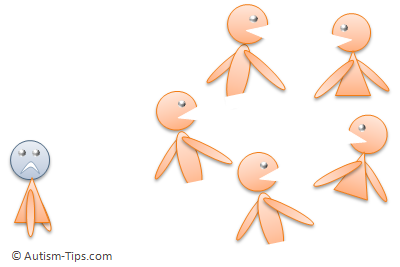Rewards and Consequences
Nadia Shanab | autism, general advice, parenting16 Jul 2010
In previous articles I talked about the effectiveness of the reward system. First, I prefer to be positive and apply the reward (positive reinforcement) system as much as I can, and seize every opportunity to praise and encourage the children. Most kids work for rewards, and love to be praised and encouraged. But sometimes, the reward system doesn’t help achieve your goal. This is when consequences should be considered. There is a misconception about consequences. Some people assume automatically that it is a negative way to fix problems. I do not agree on this assumption, and I cannot emphasize enough on the importance of applying consequences when needed, and in the right context.
The positive reinforcement is simple to explain. When the child accomplishes a task or shows a desired behavior, she/he can be rewarded as agreed upon. Usually, kids work for something they like. You need to find about every child’s preferences.
Q: Why do we opt for consequences?
A: Because the children need to know about their boundaries and limits. They feel more secure and reassured when they are told that they have crossed the line. That explains why they keep testing adults. They are trying to find out about their limits and how far they can go. Simply, they are defining their boundaries.
Q: When do you give consequences?
A: Prepare the child, by warning her/him a few times, before you give consequences. We don’t want the bad behavi0rs to settle and turn into habits. If the child’s problems remain unaddressed, it will become harder on everybody to handle it, and would take longer to be solved. That is why problems need to be addressed promptly.
I repeat one more time that consequences are applied when the reward system fails.
Examples of situations when consequences should be applied
- Examples for consequences
Exclusion: Children hate to be excluded from the group or the class in general. If you tell a child that she/he will be removed from doing the activity she/he is doing with peers, or from circle time, the problem might stop here. Sometimes, you need to go one step farther if the child is still not responding. Tell the child that she/he will have to leave the classroom for a certain amount of time (it is very important to use a visual timer to make it tangible for the child). You can have the child wait outside the classroom either sitting or standing while showing her/him the timer. The child should be supervised at all times, if she/he had to leave the classroom. Make sure to explain to the child the reason why was she/he pulled out of the classroom, then allow some thinking time and don’t engage in too much talking unless the child has important questions to be answered. Exclusion is considered a removal of a privilege.
More Tips
Tags: autism, communication, consequences, discipline, incentive sticker sheet, parenting, rewards, rules, techniques, tips, visual timer


YES!!! Can’t agree more than that! Consequences help setting boundaries and making the children feel secure! This is true in all special ed and general ed classes!
Way to go, Mrs. A!
Dear Mrs. Tsang
Thank you so much for you feedback! Being a teacher in special ed first than in regular ed, you are in a position to tell what really works best for kids. I appreciate your comment very much.:)
Gosh, I’ve been looking about this specific topic for about an hour, glad i found it in your website! 🙂
It’s really a cool and helpful piece of info. I am happy that you just shared this helpful information with us. Please keep us up to date like this. Thanks for sharing.
You are most welcome!